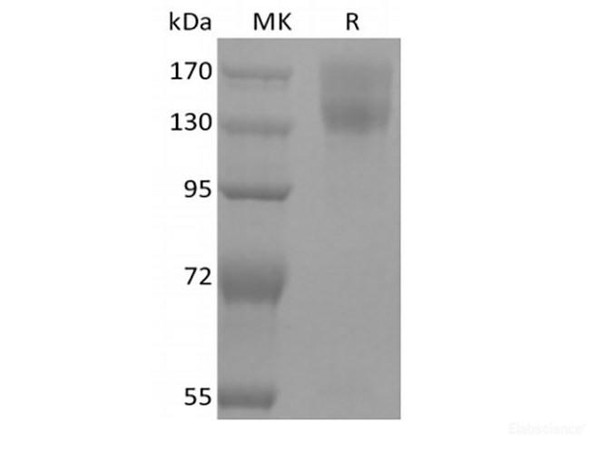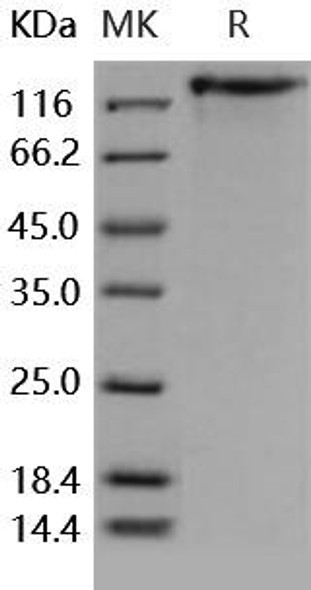Recombinant Mouse Leptin Receptor/LEPR/CD295 (C-mFc)
- SKU:
- RPES6648
- Product Type:
- Recombinant Protein
- Species:
- Mouse
Frequently bought together:
Description
| Product Name: | Recombinant Mouse Leptin Receptor/LEPR/CD295 (C-mFc) |
| Product Code: | RPES6648 |
| Size: | 10µg |
| Species: | Mouse |
| Expression Host: | HEK293 Cells |
| Synonyms: | Leptin receptor, LEP-R, HuB219, OB receptor, OB-R, CD295, LEPR, DB, OBR |
| Mol Mass: | 118.5 kDa |
| AP Mol Mass: | 130-190 kDa |
| Tag: | C-mFc |
| Purity: | > 95 % as determined by reducing SDS-PAGE. |
| Endotoxin Level: | < 1.0 EU per μg of the protein as determined by the LAL method. |
| Bio Activity: | Testing in progress |
| Sequence: | Leu22Gly839 |
| Accession: | P48356 |
| Storage: | Generally, lyophilized proteins are stable for up to 12 months when stored at -20 to -80°C. Reconstituted protein solution can be stored at 4-8°C for 2-7 days. Aliquots of reconstituted samples are stable at < -20°C for 3 months. |
| Shipping: | This product is provided as lyophilized powder which is shipped with ice packs. |
| Formulation: | Lyophilized from a 0.2 μm filtered solution of PBS, pH 7.4. Normally 5 % - 8 % trehalose, mannitol and 0.01% Tween80 are added as protectants before lyophilization. Please refer to the specific buffer information in the printed manual. |
| Reconstitution: | Please refer to the printed manual for detailed information. |
| Background: | The Leptin receptor is a member of the Class I cytokine receptor family. It mediates the activities of Leptin, a multi-functional hormone produced primarily by adipose tissues that plays roles in food intake, energy metabolism, angiogenesis, reproduction, hematopoiesis, bone metabolism, and immune function. The human Leptin R gene encodes 1165 amino acids (aa) including a signal peptide, an extracellular region with cytokine receptor homology (CRH), multiple fibronectin type III domains and a WSXWS motif, a transmembrane domain, and a cytoplasmic domain that supports JAK/STAT signaling. Soluble Leptin R is the primary Leptin-binding protein in blood, where it maintains a pool of available bioactive Leptin, delays Leptin clearance from circulation, and down-regulates blood-brain transmission of Leptin. In humans, soluble Leptin R levels are inversely proportional to adiposity and are elevated in females versus males. Soluble Leptin R is also found up-regulated in patients with chronic heart failure, end-stage renal disease, and anorexia.It is expressed by tumor-initiating stem cells, and is proposed as a link between cancer and obesity. |









